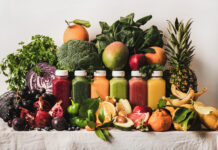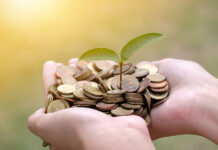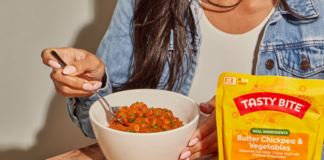
“Sustainability has become one of the biggest issues in food and beverage today—and packaging is a key component of the move toward sustainable business practices,” states the 2020 Sustainable Packaging Report from Winsight Grocery.
“Sustainable packaging is no longer a nice-to-have. It’s a must-have for any brands looking to future-proof their operations against the rising tide of consumer scrutiny,” states Sustainable Packaging Unwrapped, a 2019 report from GlobalWebIndex.
CPG leaders identified concerns about plastic and packaging waste as the second-most likely issue they believed would affect their businesses in 2020, according to Industry View 2020 from the Consumer Brands Association. CBA also reports all 25 of the largest CPG companies have committed to increasing recyclable content, reducing packaging, or reusing material. Eighty percent of those companies are working toward fully recyclable packaging for all products within the next 10 years.
What is sustainable packaging?
Although sustainable can be defined in a number of ways, the Sustainable Packaging Coalition has a vision for sustainable packaging that meets the following criteria:
- Is beneficial, safe, and healthy for individuals and communities throughout the packaging’s life cycle
- Meets market criteria for performance and cost
- Is sourced, manufactured, transported, and recycled using renewable energy
- Optimizes the use of renewable or recycled source materials
- Is manufactured using clean production technologies and best practices
- Is made from materials healthy throughout the life cycle
- Is physically designed to optimize materials and energy
- Is effectively recovered and used in biological and/or industrial closed loop cycles
What do consumers want?
GlobalWebIndex asked consumers in the U.S. and UK what’s most important to them when it comes to environmentally friendly packaging. Here’s what they said:
- 64% want recyclable
- 53% want reusable
- 46% want products that don’t overpackage
- 39% want compostable/biodegradable
- 36% want packaging made from renewable sources
- 35% want packaging that makes it easy to separate different materials for disposal
Also, over 50% of consumers told GlobalWebIndex they had reduced the amount of disposable plastic they used in the last 12 months.
While consumers now prefer materials made from recycled goods that can also be recycled, “the next frontier of sustainability is the biodegradable and compostable markets,” according to 2019 Trends and Advances in Food Packaging and Processing from PMMI, The Association for Packaging and Processing Technologies.
Where are companies going with package sustainability?
“Statistics on sustainable packaging from leading industry sources paint a picture of an industry striving for change,” states the 2020 Sustainable Packaging Report.
In a recent Packaging Digest article, Tristanne Davis, senior manager with the Sustainable Packaging Coalition, laid out five trends she sees for 2020:
- More companies announce sustainable packaging goals and create action plans.
- Companies find ways to increase end markets for recycled plastics.
- Brands replace substrates to meet recovery goals — for example, paper-based solutions.
- Companies look at reusable packaging more seriously.
- Material health becomes more important — in particular, more efforts to reduce per- and polyfluoroalkyl substances (PFAS).
Developing sustainable packaging is a challenge for food companies that also need to keep their products fresh and safe while making a profit. However, it’s a challenge more companies will have to meet in this evolving world.









